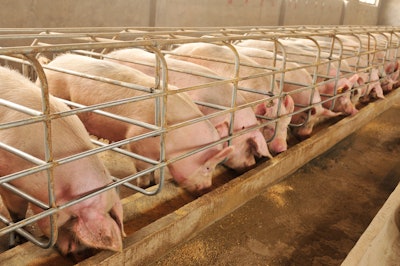
Global weather isn't exactly cooperating with crop production this year, but so far, it hasn't made that big an impact on commodity prices, according to Chad Hart, an extension economist at Iowa State University.
The U.S. Department of Agriculture (USDA) made minimal changes to global crop projections in its March 8 World Agricultural Supply and Demand Estimates report, cutting soybean production just 1.4 million tons on lower expected production in Brazil and South Africa and making similar cuts to corn production.
These cuts were much smaller than what most traders and economists expected to see in light of South America's multi-year drought — and there is reason to believe that USDA could make further cuts if the drought in South America continues, Hart said. But if you look beyond the report's top-line numbers, Hart said, there's evidence that the USDA's conservative approach is the right one.
USDA has also walked back its U.S. feed use projections, Hart said, mostly because the U.S. hog industry is trying to cut back its numbers. But USDA's pork production numbers suggest they haven't been very successful; pork production is rising.
It's likely, Hart said, that in the process of culling their herds, pork producers have selected for more productive sows. That has increased the average litter size as well as piglet survival rates, and explains why feed use has declined while pork production has increased: Fewer animals are making more meat.
Beef production has seen a similar trend, though not to the same extent as the hog industry, Hart said.
Meanwhile, crop producers have enjoyed an inverse trend. In spite of inclement weather in North and South America in recent years, farmers on both continents have managed to produce surprisingly large crops. That success has been attributed to improved seed varieties and management practices.
If the trend holds, Hart said, then today's corn and soybean prices — though lower than their 2022 peaks — may actually still be elevated on account of dry weather conditions. And if the weather turns this summer, it could cause prices to come down even farther.
USDA is forecasting a significant bump in crop yields this summer in the event of normal weather, on the basis that this theory about improved crop productivity is correct. The agency also anticipates farmers will plant more corn and fewer soybeans in the months to come in response to narrow profit margins for both crops. But USDA made a similar prediction last year, Hart said, and farmers bucked the trend and favored corn instead, leading to surpluses and falling prices.
But it is also possible, Hart said, that the weather will not change and that soil moisture reserves will run dry. That could make this coming years' crops more susceptible to drought.
“We are going in to planting season with the soils being very dry,” Hart said. “I like to think of soil moisture like a savings account. We have been tapping into that saving account for the past 3-4 years, and we have drained that account down to very low levels.”


















